In recent years, there has been a significant increase in the popularity of service robots, particularly in the restaurant industry. But what exactly is a Servi, and why are they becoming essential to the service sector? This article will explore the concept of service robots, their applications, and the reasons behind their growing popularity.
What are Service Robots?
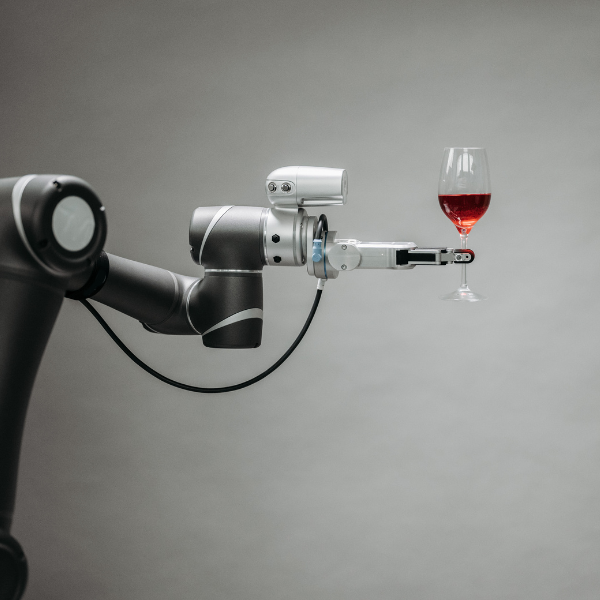
Service robots are machines designed to perform tasks and provide services to humans in various settings. They are equipped with sensors, processors, and actuators that enable them to interact with the environment and carry out specific functions.
A robot's level of autonomy can vary depending on its specific tasks and capabilities. Some robots may operate with full autonomy, making decisions and adapting to their environment using advanced sensors and artificial intelligence algorithms. Others may have partial autonomy, where they perform certain tasks autonomously but rely on human input for more complex or critical actions.
Additionally, some robots can be operated remotely (tele-operation) by a person who controls their movements and actions in real-time. This range of autonomy allows service robots to be tailored to specific needs and contexts, providing flexible solutions for diverse applications.
Service robots have applications across various industries, including healthcare, manufacturing, transportation, and public service. For instance, armed forces use service robots for tasks such as bomb disposal, while medical service robots assist in complex surgical procedures. In the restaurant industry, service robots like Servi help improve efficiency and customer experience by performing tasks such as food delivery and table cleaning.
The Growing Popularity of Service Robots in Hospitality
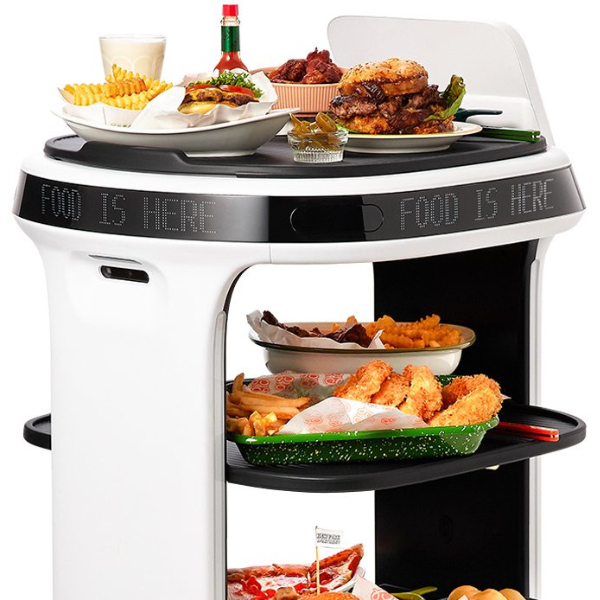
Service robots, especially in the hospitality sector, are gaining popularity. Here are some key factors contributing to this trend:
Increased Efficiency and Cost Savings
One of the primary reasons behind the rising popularity of service robots is their ability to increase efficiency and reduce costs. As these robots can perform the intended tasks quickly and accurately, they can help businesses save time and labor expenses. In the hospitality industry, robots can take over repetitive tasks, allowing human employees to focus on more complex and customer-centric duties, not only in restaurants but also in hotels, casinos, and other related services.
Enhanced Customer Experience
The presence of service robots can create a unique and memorable experience for guests in various hospitality settings. Customers may find the interaction with robots entertaining and exciting, enhancing their overall enjoyment. Robots can also be programmed to perform small entertainment routines, such as dancing or interacting with customers, further adding to the experience in hotels, restaurants, and events.
Minimizes Errors
Service robots can also improve the customer experience by providing consistent and high-quality service across the hospitality sector. A robot can be programmed to perform a particular service with a high level of accuracy and consistency, minimizing errors. For example, a robot can deliver food to tables in restaurants, manage luggage in hotels, or assist in event organization quickly and efficiently, ensuring that customers receive top-notch service, leading to increased customer satisfaction.
Technological Advancements
The rapid development of technology has made service robots more affordable and accessible for businesses of all sizes. Advancements in artificial intelligence, machine learning, and sensing systems have allowed service robots to become more versatile and capable of performing a wide range of tasks. As a result, more and more restaurants are investing in service robots to stay competitive and meet the evolving demands of consumers.
As technology continues to advance, service robots will likely become an even more integral part of the restaurant industry. Here are some potential developments and trends that we can expect in the future:
Greater Adoption Across Various Restaurant Types
While service robots are currently more common in high-end restaurants and large chains, we can expect to see them become increasingly popular across various restaurant types, including smaller establishments and fast-food outlets. Restaurants are also leveraging robots for food delivery services. Autonomous delivery robots or drones are already navigating sidewalks or designated paths to transport orders directly to customers' homes or offices.
Enhanced Human-Robot Interaction
As service robots become more advanced, we can expect to see improvements in human-robot interaction, making it easier for customers and staff to communicate with and control the robots. This may include voice recognition technology, gesture control, and even facial recognition for more natural and intuitive interactions.
Expanded Range of Tasks
Service robots will likely continue to evolve and develop new capabilities to perform a wider range of tasks within the restaurant setting. Examples include more complex tasks such as food preparation, bartending, and even providing personalized recommendations to customers based on their preferences and dietary requirements.
Challenges and Opportunities in Implementing Service Robots in Restaurants
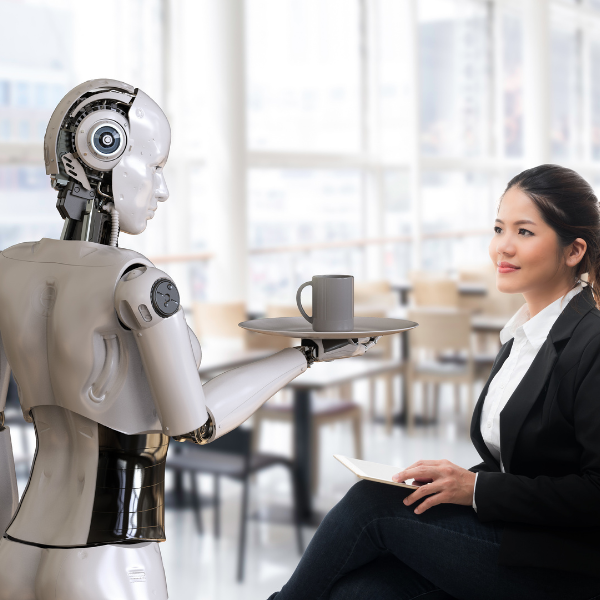
While the benefits of service robots in the restaurant industry are clear, there are also challenges and opportunities that businesses must consider when implementing these technologies. Understanding these factors will help restaurant owners make informed decisions about whether to invest in service robots and how to integrate them effectively into their operations.
Challenges
-
High Initial Investment: One of the main challenges of implementing service robots is the initial investment required. These advanced robots can be expensive, and smaller restaurants will likely opt for leasing plans that make service robots like Servi much more affordable.
-
Technical Expertise: Deploying and maintaining service robots requires a certain level of technical expertise. Restaurant owners may need to hire or train staff to manage and troubleshoot the robots, which can be an additional expense and challenge for businesses - which is another reason why we love Servi. The Bear Robotics team will come and set everything up for you.
Opportunities
-
Customization and Personalization: Service robots can be programmed to remember customer preferences and offer personalized recommendations, enhancing the dining experience and fostering customer loyalty.
-
Data Collection and Analysis: Service robots can collect valuable data on customer behavior, preferences, and feedback, which can be used to improve operations, menu offerings, and marketing strategies.
-
Collaboration with Human Staff: By taking over routine tasks, service robots can free up human staff to focus on more complex and creative aspects of their jobs, fostering a collaborative environment that leverages the strengths of both humans and robots.
-
Adaptability and Scalability: Service robots can be easily updated with new software and features, allowing restaurants to adapt to changing customer preferences and industry trends. Additionally, as more tasks become automated, businesses can scale their operations more efficiently.
Conclusion: The Rising Popularity of Service Robots in Restaurants
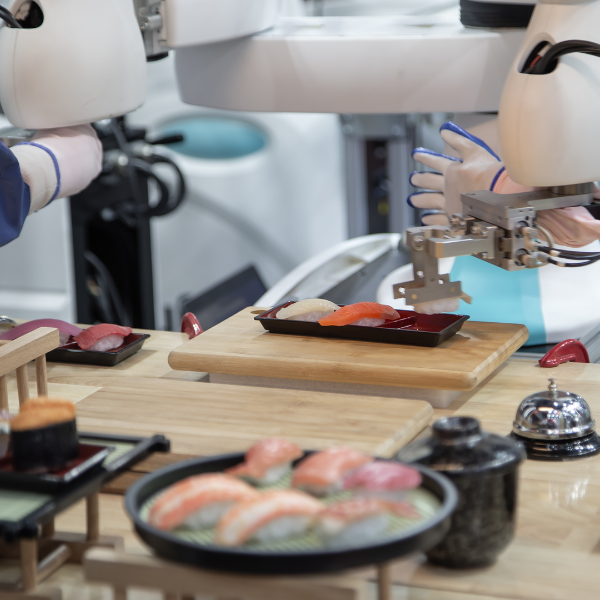
The growing popularity of service robots in the restaurant industry is a testament to the potential benefits they offer, from increased efficiency and cost savings to enhanced customer experience. As technology continues to advance, it is likely that service robots will become even more prevalent in various types of restaurants, with an expanded range of tasks and improved human-robot interaction.
However, businesses must carefully consider the challenges and opportunities associated with implementing service robots. By addressing them and embracing the potential of this technology, restaurants can leverage service robots to enhance their offerings, streamline their processes, and ultimately, provide an exceptional dining experience for their customers.
For those interested in incorporating service robots into their businesses or personal lives, Airpuria offers a range of service robots designed for various applications, from restaurant service to healthcare and beyond. With financing options for individuals and businesses, Airpuria makes it more accessible for customers to invest in innovative technologies that can improve their quality of life and business operations. Explore Airpuria's collection of service robots and learn more about their financing options on their website.
How to Easily Lease Servi for YOUR Restaurant
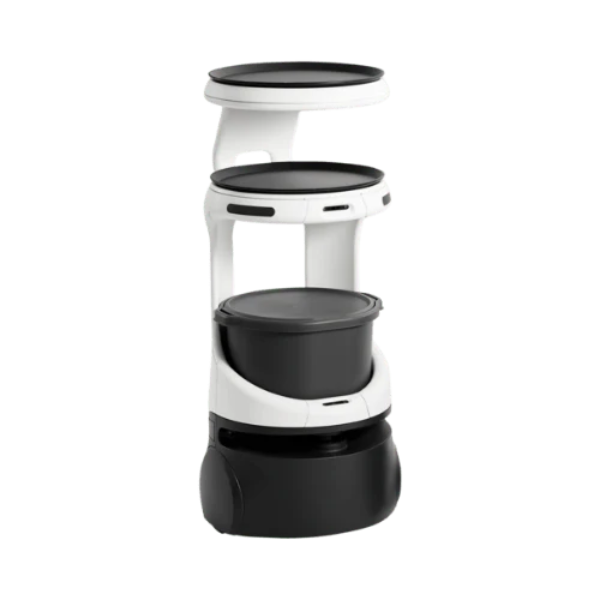
Are you ready to revolutionize your restaurant and enhance your customers' dining experience? Discover the benefits of Servi, the cutting-edge service robot designed by Bear Robotics, and find out how you can lease one for your establishment. Say goodbye to long wait times and overworked staff, and embrace the future of restaurant service.
With Airpuria's competitive leasing plans, you can choose the perfect Servi model for your needs and enjoy 24/7 customer support from both Airpuria and Bear Robotics. Don't miss out on the opportunity to stay ahead of the competition and elevate your restaurant to new heights.
Click here to learn more about leasing Servi service robots and transforming your dining experience!
Leasing Plans:
-
12-Month Lease: $1199.00 per month
-
24-Month Lease: $749.00 per month
-
36-Month Lease: $599.00 per month
Servi Features:
-
100% Self-Driving
-
Multi-Robot Mode
-
Auto Return
-
Extended Battery Life
-
24/7 Monitoring and Analytics
-
Quick Installation
Support and Setup:
-
Bear Robotics will deliver and set up Servi for you
-
2-3 days of on-site training for your staff
-
24/7 customer support from Airpuria and Bear Robotics
Frequently Asked Questions About Service Robots
What is a Servi?
A Servi is a cutting-edge service robot designed by Bear Robotics for use in the hospitality industry. It is expertly crafted to assist with tasks such as serving food and beverages, clearing tables, and interacting with customers, ultimately helping to improve efficiency and the customer experience. Each Servi model has unique features and capabilities, ensuring that there is a perfect fit for every establishment. Explore the different Servi models and find the one that suits your business best:
-
Bear Robotics Collection: Discover the full range of Bear Robotics service robots, including the various Servi models, and compare their features to find the perfect match for your needs.
-
Servi Plus: The Servi Plus is a top-of-the-line service robot designed to handle a wide range of tasks with precision and efficiency, making it a valuable addition to any hospitality setting.
-
Bear Robotics Servi: The original Servi model, this service robot offers a versatile and reliable solution for tasks such as serving food and beverages, clearing tables, and interacting with customers.
-
Bear Robotics Servi Mini: Designed for smaller establishments or those with limited space, the Servi Mini offers the same exceptional service and efficiency as its larger counterparts in a compact, space-saving design.
How do service robots differ from other types of robots?
Service robots are specifically designed to perform intended tasks based on human-robot interaction in various industries, such as healthcare, hospitality, and public service. Unlike industrial robots, which are primarily used in manufacturing and automation processes, service robots are intended for personal or professional use in environments where they interact with human beings.
Can service robots operate without human intervention?
The level of autonomy in service robots can vary greatly, ranging from partial autonomy (with active human-robot intervention) to fully autonomous systems that can perform intended tasks without human intervention. Or, some service robots may feature full tele-operation, allowing a human operator to control the robot remotely.
In which industries are service robots commonly used?
Service robots are found in many forms across a variety of industries, including healthcare, hospitality, banking, transportation, and even the armed forces. They can perform useful tasks, such as assisting with medical procedures, serving food, or transporting goods and passengers.
What are the advantages of using service robots in businesses?
Service robots can offer numerous benefits to businesses, including increased efficiency, cost savings, improved customer experience, and the ability to adapt to evolving industry trends. By automating certain tasks, businesses can allocate resources more effectively and focus on other aspects of their operations.
Are there any ethical or regulatory concerns associated with the use of service robots?
As service robots become more prevalent and their capabilities expand ethical and regulatory considerations will likely become more prominent. Data privacy, safety, and the potential impact on employment may need to be addressed to ensure the responsible and sustainable development of service robot technology.

